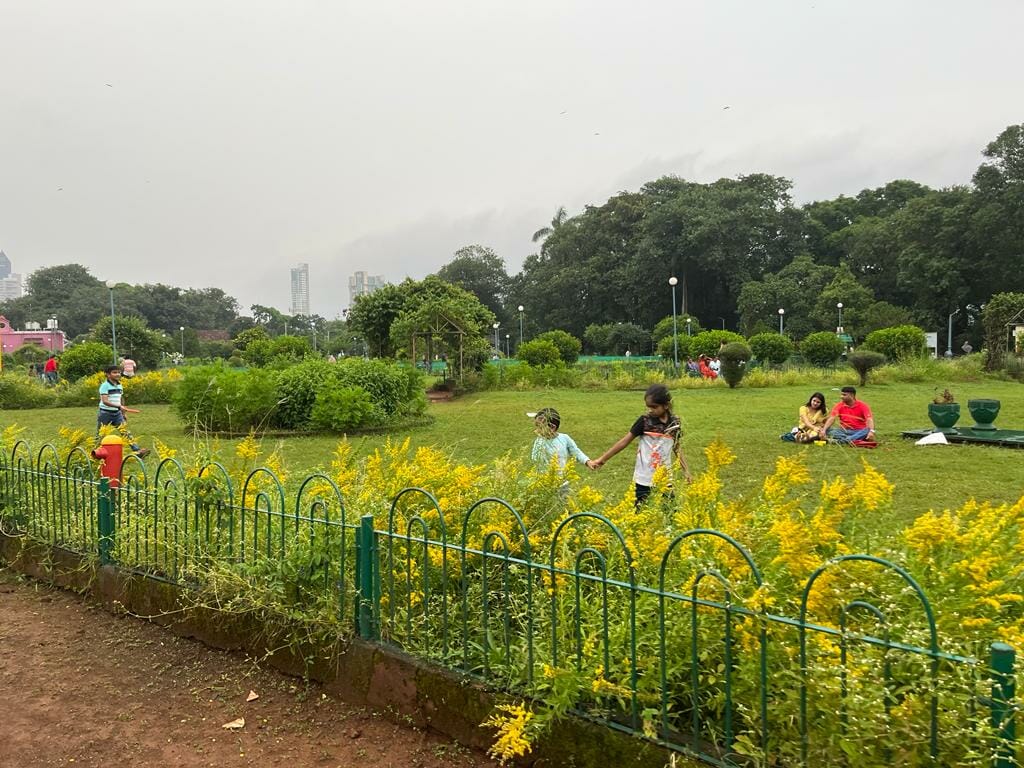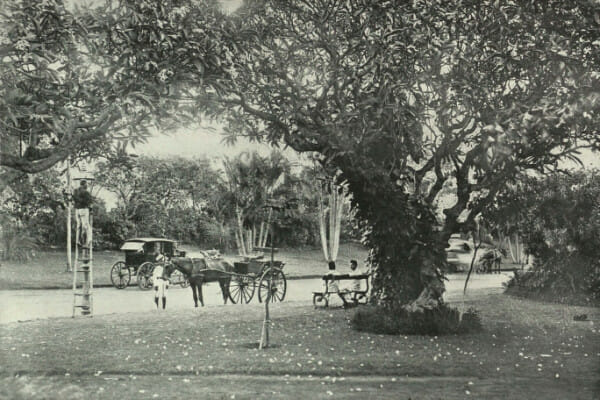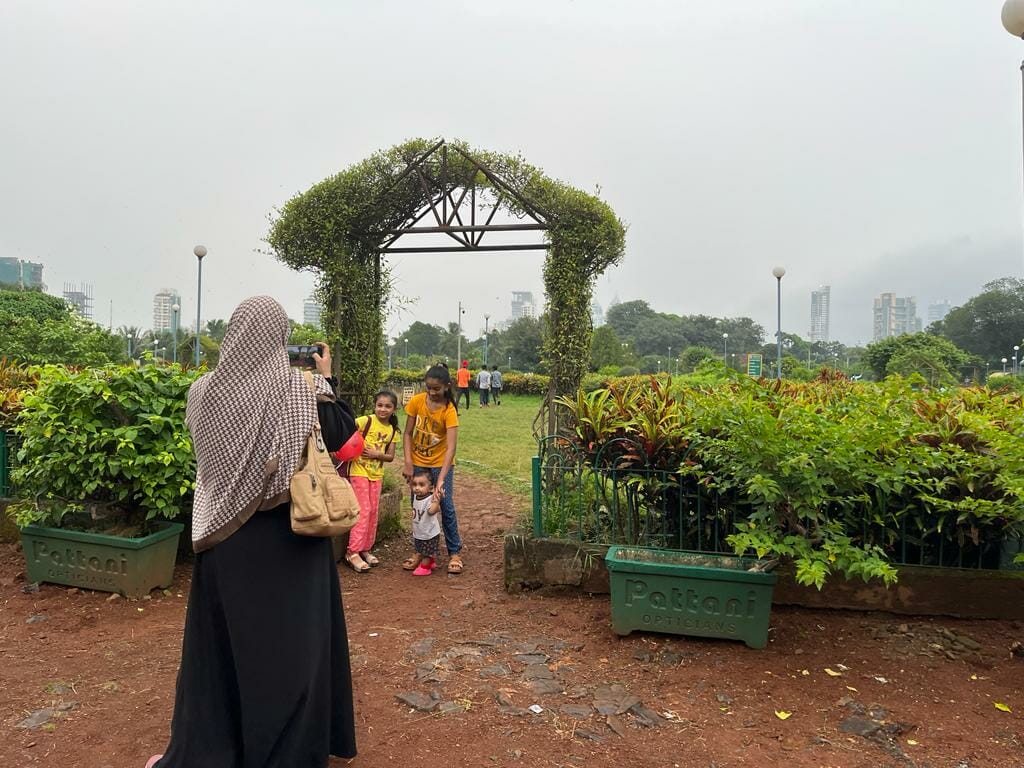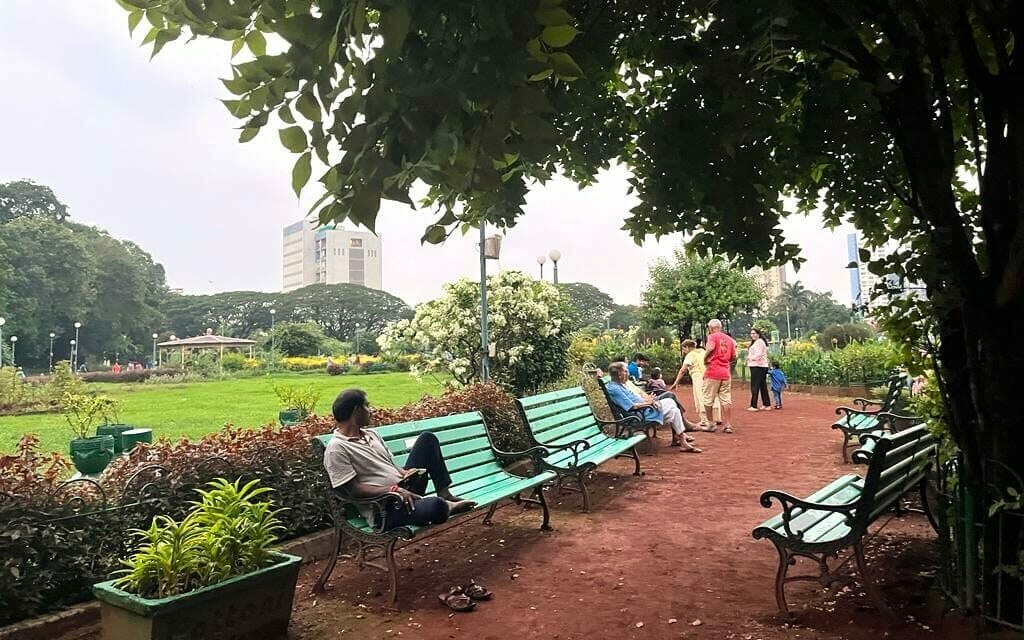“I have a vivid memory from my childhood when I was about 8 years old. My grandfather took me to the Hanging Gardens, and I was absolutely thrilled. The trees, the open spaces to run, the panoramic views from the top – it all convinced me that no other garden could possibly be as beautiful as this one. This was in the 1980s, and my grandfather passed away not long after that. But the dearest memories I have with him are of those moments in this garden, playing around while he watched from a distance.”
“I hadn’t thought about that memory in a long while,” Pawan Mehta chuckled, with a teary eye, as he sat in the same garden with his wife on a Sunday evening.

A piece of Mumbai’s cultural heritage, the Hanging Gardens, has held a special place in the memories of both the city’s residents and tourists for over a century.
Resting atop a reservoir constructed on Malabar Hill in the 1880s, these gardens are one of Mumbai’s rare green sanctuaries.
However, recent events have taken a concerning turn. A tense standoff unfolded last week between citizens and Mumbai’s municipal authorities regarding a plan that involves shutting down Hanging Gardens for seven years. The plan is to relocate more than 200 trees and reconstruct the garden to make way for an expansion of the colonial-era reservoir that provides water to parts of South Mumbai.
Why is it called “Hanging Gardens”?
In the 1700s, Malabar Hill was a forest inhabited by hyenas and tigers. It got its name from pirates of the Malabar coast planning ship raids, after which the British built a lookout tower. The forest soon witnessed bungalows of wealthy people after a fire in 1803, that devoured homes inside Bombay’s fort walls. Epidemics and the demolition of these walls in the 1860s led the city’s elites – including the English, Parsis and Hindus – to seek refuge on the hill. In the 19th century, it housed the British Governor of Bombay, and Maharajas built palaces. With its refreshing climate, expansive outbuildings, and servant quarters, 19th-century Malabar Hill had a similar ambiance of present-day Mahabaleshwar.

The British then built tunnels from northern lakes like Vaitarna to Tulsi lake on Salsette Island for high-pressure water supply to Bombay. The Malabar Hill reservoir, one of the city’s first artificial reservoirs, was constructed with an arch-type masonry and wooden roof by the Shapoorji Pallonji Group. To protect the reservoir, a part of the Pherozeshah Mehta Garden – named after one of the founders of the Indian National Congress who was also municipal commissioner in 1873 – was first laid with a wooden roof around the year 1887. Later, the entire garden was excavated and its roof was concreted and redone in the late 1930s.
This garden became better known as the ‘Hanging Gardens of Bombay’ due to its elevated position.
Read more : Aarey: Did you know this forest also has a film city, garden, hospital and more?
Serenity amid chaos
The Hanging Gardens, situated amidst the bustling streets of South Mumbai, serve as a lush sanctuary amid urban chaos. With their expansive green spaces, well-maintained jogging paths, and captivating views of the Arabian Sea, these gardens are a popular spot for both locals and tourists. As the sun sets over the city, the Hanging Gardens offer a mesmerising backdrop for an evening stroll, providing a serene escape.

Adjacent to the Kamala Nehru Park, these gardens create a green haven in the midst of the city. The well-maintained lawns, vibrant flower beds, and numerous hedges that are carved into various animal shapes have made the Hanging Gardens a cherished spot for relaxation and rejuvenation. Over time, they have not only retained their historical significance but also evolved to cater to the modern age, ensuring that they remain a beloved feature of Mumbai’s cultural heritage.
Another popular attraction was the “Old Woman’s Shoe” or “Mhataricha Boot”, in the adjoining Kamla Nehru Park, where children have cherished going inside the huge shoe and climbing to the gallery and waving to their families. After renovation and reopening in 2018, the entry inside the shoe house was shut last year as it was considered unsafe for “human occupancy.”
For tourists, the entire precinct of Hanging Gardens is an experience of lifetime with greenery, fun and fantastic views of the sea and the city.
Opposition to reservoir extension
The Brihanmumbai Municipal Corporation (BMC) said that the Malabar Hill water reservoir project will construct a new 91 million-litre reservoir near Hanging Gardens and enhance the old 147 million-litre reservoir under Hanging Gardens, making a total of 250 million litres capacity. The project is estimated to cost around Rs 400 crore and is expected to finish in seven years.
However, residents are concerned about the environmental impact and lack of detailed reports given to them. According to them, there have already been two landslides on Malabar Hill in 2020 and the ecosystem is fragile.

The Malabar Hill citizens met with MLA Mangal Prabhat Lodha and the BMC officials last week and proposed that the BMC scrap the current Malabar Hill reservoir reconstruction plan and suggested four alternative sites for the reservoir.
Activist Zoru Bhathena says, “We covered the project’s background, MLA Lodha’s support for a new tank in a different location, Dr. Nilesh Baxi’s commitment to finding alternative sites, suggestions for tank repair, construction methods, and creative water supply solutions.
Meanwhile, explaining the project details to the residents, BMC official P Velrasu said that they had initially planned to reconstruct the Malabar Hill reservoir in stages but discovered its dilapidated condition after scuba divers inspected it.
To avoid disrupting South Mumbai’s water supply, the BMC decided to complete the project at once. “We had to find a solution without disrupting the supply. It was like performing an operation on a patient who is conscious,” he said.
Velrasu emphasised that failing to address the old reservoir’s condition immediately would lead to its collapse. Additionally, building a new reservoir downstream would not counteract the effects of gravity. “So considering all these things, we tried to minimise the damage. This entire project may take five years, seven years in a worst-case scenario,” he added.
However, visitors like the Mehta family, find it hard to believe that their most beloved gardens will be out of bounds for not weeks or months, but years.
| Hanging Gardens Number of trees – Total 389 trees on top of a hill. Best time to visit – From November to March. Entry – No entry fee for visiting the park. If you haven’t visited yet, make sure to do so and share your cherished memories with us in the comments below. We’d love to hear about your experiences! |